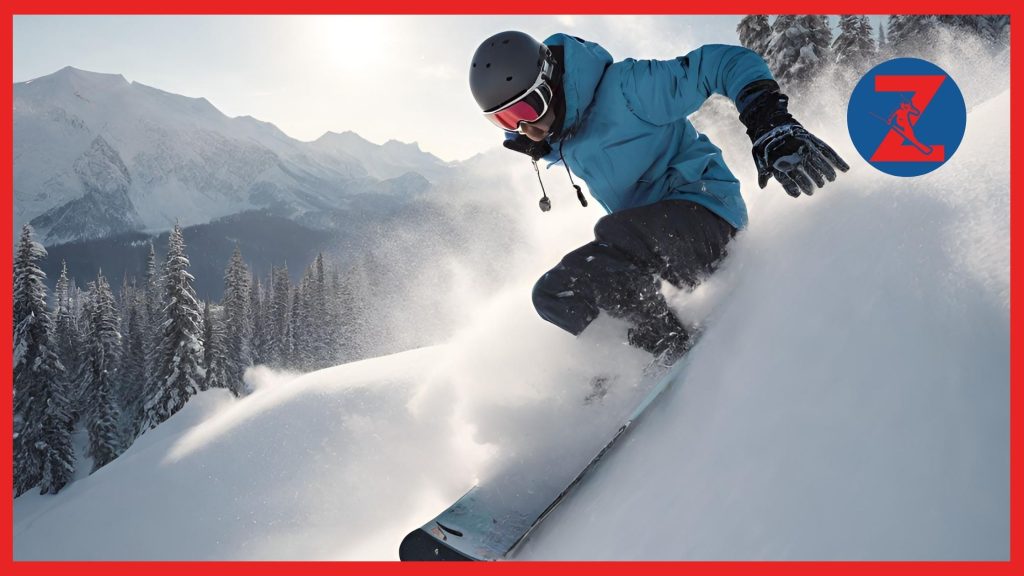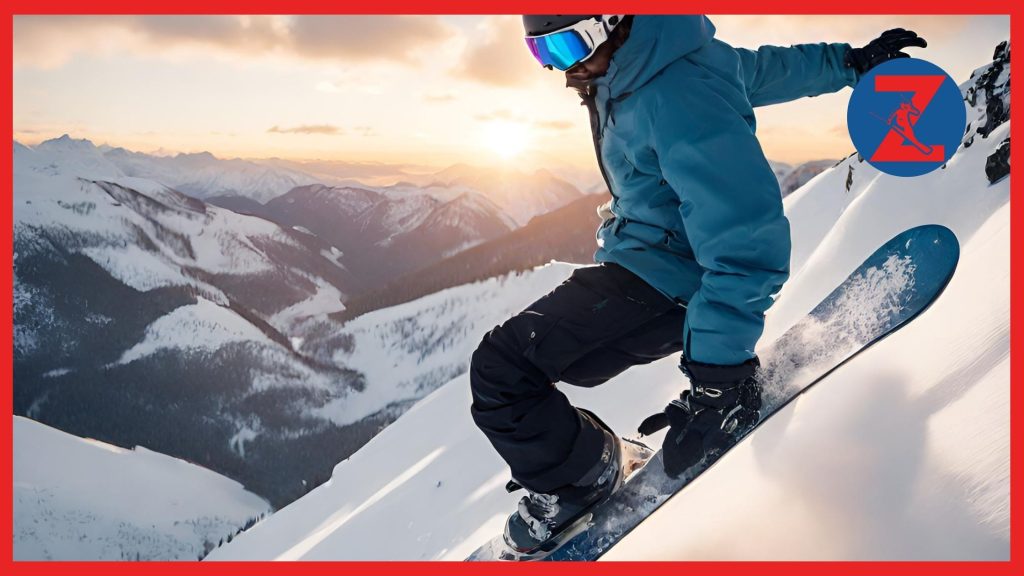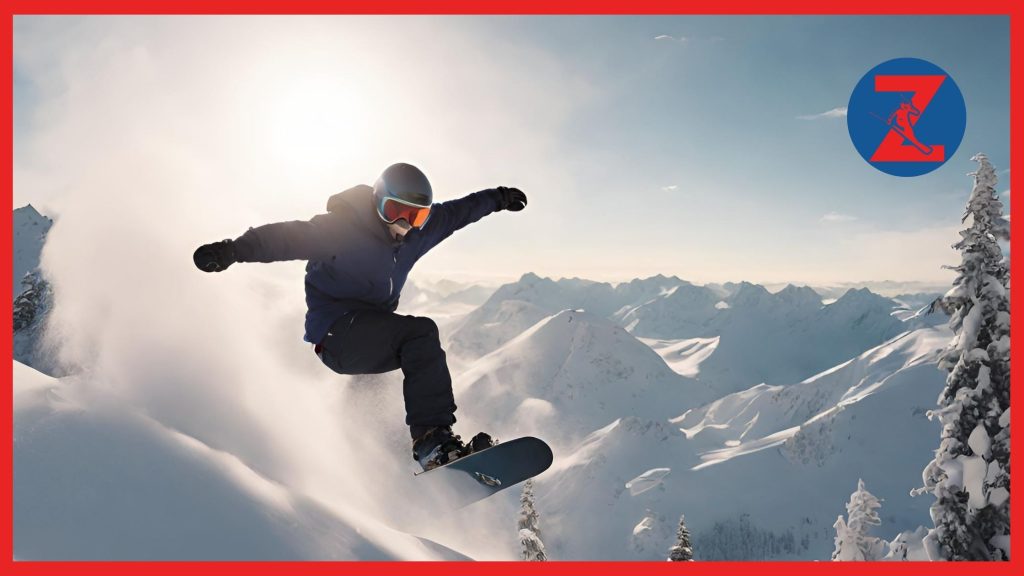Are you a snowboarding enthusiast or someone who has always been intrigued by this exhilarating sport? Whether you’re a complete beginner or looking to brush up on your skills, understanding the fundamentals is key to mastering the slopes. In this section, we will demystify snowboarding by exploring the essential gear, providing valuable tips for beginners, and uncovering the best snowboarding locations around the world.
Snowboarding Gear: What You Need to Get Started

When venturing into the exciting world of snowboarding, having the right gear is essential to ensure a safe and enjoyable experience on the slopes. This section will guide you through the necessary snowboard gear and equipment, allowing you to make informed choices that suit your needs and skill level.
Choosing the Right Snowboard
One of the most critical decisions you’ll make is selecting the right snowboard. The right board will depend on your experience level, riding style, and the type of terrain you intend to conquer. Beginners may find an all-mountain or freestyle board more versatile, while more experienced riders might opt for a freeride or powder board for off-piste adventures.
Boots and Bindings
Equally important are your snowboard boots and bindings, as they play a crucial role in providing comfort, control, and stability on the slopes. It’s crucial to find boots that fit snugly but comfortably, offering the right amount of support for your feet and ankles. Bindings should be easy to adjust and secure to enhance your riding experience.
Dressing for the Slopes
Proper attire is essential for snowboarding, as it helps keep you dry, warm, and protected from the elements. Layering is key, allowing you to adapt to changing weather conditions. Invest in a waterproof and breathable outer shell, insulated mid-layers, moisture-wicking base layers, and thermal socks to stay comfortable throughout the day.
Snowboarding Gear Checklist
| Essential Gear | Description |
|---|---|
| Snowboard | The board is your main piece of equipment. Choose based on your riding style and experience level. |
| Boots | Comfortable boots that provide support and a secure fit are crucial for performance and safety. |
| Bindings | Bindings connect your boots to the snowboard, allowing for control and maneuverability. |
| Helmet | A helmet is essential for protecting your head from potential impacts and minimizing the risk of injuries. |
| Goggles | Goggles protect your eyes from wind, snow, and sunlight, enhancing visibility on the slopes. |
| Gloves | Insulated gloves keep your hands warm and protected from the cold and moisture. |
| Outerwear | A waterproof and breathable jacket and pants provide protection against snow, wind, and moisture. |
| Base Layers | Moisture-wicking base layers help regulate body temperature and keep you dry and comfortable. |
| Thermal Socks | Socks designed for snowboarding keep your feet warm and provide cushioning for extra comfort. |
Equipping yourself with the right snowboarding gear is the first step towards an exhilarating and fulfilling journey on the slopes. Take the time to research and invest in high-quality equipment that suits your individual needs and allows you to progress in the sport. With the right gear in hand, you’ll be ready to ride confidently and enjoy all the thrills that snowboarding has to offer.
Tips for Beginner Snowboarders
For those new to snowboarding, getting started can seem daunting. However, with the right guidance and a willingness to learn, beginners can quickly progress and build confidence on the slopes. Here are some essential tips and techniques to help beginner snowboarders improve their skills:
1. Balance is Key
Developing good balance is fundamental to becoming a proficient snowboarder. Start by finding a flat, open area and practice standing on the snowboard with your feet shoulder-width apart. Focus on distributing your weight evenly and maintaining a centered posture. Gradually shift your weight from edge to edge to get a feel for the board’s responsiveness.
2. Mastering Turns
Turning is a crucial skill in snowboarding. To initiate a turn, gently shift your weight to your toes or heels, depending on the direction you want to go. Remember to look in the direction of your turn, as your body tends to follow your head. Practice making smooth, controlled turns on gentle slopes before progressing to steeper terrain.
3. Speed Control
Learning how to control your speed is vital for safety. To slow down, gently shift your weight onto your back foot, putting pressure on the board’s tail. To increase speed, transfer your weight forward onto your front foot. Practice finding a comfortable balance between speed and control, adjusting your weight distribution accordingly.
4. Stance and Alignment
Experimenting with different stances can help you find what feels most comfortable. Most beginners find a slightly wider stance with their feet angled outward (duck stance) to be a good starting point. Ensure that your bindings are aligned properly with the edge of your snowboard to optimize control and reduce the risk of knee strain.
5. Taking Lessons
Consider taking lessons from a certified snowboarding instructor. Professional guidance can accelerate your learning process and help you avoid developing bad habits. Instructors can provide personalized feedback and teach you proper techniques, ultimately enhancing your progress and enjoyment of the sport.
6. Embrace Falling
Falling is an inevitable part of learning to snowboard, so don’t be discouraged when it happens. Learn to fall safely by keeping your limbs relaxed and avoiding reaching out to break your fall. Remember to protect your wrists by wearing wrist guards and always use proper protective gear, including a helmet.
“To improve as a snowboarder, it’s important to embrace the learning process and have fun. Stay patient, be open to trying new techniques, and enjoy the exhilarating journey of progress.”
| Beginner Snowboarding Tips | Benefits |
|---|---|
| Focus on balance | Improves stability and control |
| Practice turning | Enhances maneuverability and adaptability |
| Master speed control | Promotes safety and confidence |
| Experiment with stance | Optimizes comfort and board control |
| Take snowboard lessons | Accelerates learning and skill development |
| Embrace falling | Promotes resilience and safety awareness |
Exploring the Best Snowboarding Locations

Snowboarding enthusiasts are always on the lookout for the best locations to shred the slopes. Whether you’re a beginner or an expert, the right destination can make all the difference in your snowboarding experience. This section highlights some of the most sought-after snowboarding spots around the world.
1. Whistler Blackcomb, Canada
Known for its epic powder and vast terrain, Whistler Blackcomb offers an unforgettable snowboarding adventure. With over 8,000 acres of skiable area, this Canadian resort caters to all skill levels. From gentle slopes for beginners to challenging backcountry terrain for experts, Whistler Blackcomb has it all.
2. Hakuba Valley, Japan
Hakuba Valley, located in the Japanese Alps, is a snowboarder’s paradise. With stunning mountain scenery and an average of 40 feet of snowfall each winter, this destination offers incredible powder conditions. The area is home to multiple resorts, providing a variety of slopes and off-piste opportunities.
3. Verbier, Switzerland
Verbier is renowned for its steep slopes and challenging terrain. This Swiss mountain resort attracts advanced riders seeking adrenaline-pumping descents. With access to the Four Valleys ski area, which spans over 400 kilometers of pistes, Verbier is a mecca for freeriders and backcountry enthusiasts.
4. Mammoth Mountain, USA
Mammoth Mountain, located in California’s Sierra Nevada, is a premier snowboarding destination in North America. With its vast terrain and reliable snowfall, this resort provides excellent conditions for riders of all levels. From perfectly manicured trails to wide-open bowls and epic halfpipes, Mammoth Mountain offers something for everyone.
5. Niseko, Japan
Niseko is a world-class snowboarding destination known for its abundant powder and diverse terrain. Located in Hokkaido, Japan, Niseko receives over 50 feet of snow annually, creating superb conditions for snowboarders. This area also offers unique experiences such as night riding and hot springs for après-ski relaxation.
These are just a few examples of the best snowboarding locations around the globe. Whether you’re seeking thrilling slopes, pristine powder, or picturesque surroundings, there’s a perfect spot waiting to be discovered. So grab your snowboard and get ready for an unforgettable adventure!
| Location | Country | Highlights |
|---|---|---|
| Whistler Blackcomb | Canada | Epic powder, vast terrain |
| Hakuba Valley | Japan | Stunning scenery, abundant snowfall |
| Verbier | Switzerland | Steep slopes, challenging terrain |
| Mammoth Mountain | USA | Wide variety of trails, reliable snowfall |
| Niseko | Japan | Abundant powder, unique experiences |
Mastering Tricks and Techniques
For snowboarders looking to elevate their skills on the slopes, this section explores a variety of impressive tricks and techniques to add to their repertoire. Whether you’re a beginner aiming to improve or an experienced rider seeking new challenges, mastering these maneuvers will take your snowboarding experience to the next level.
Basic Jumps and Grabs
To start, let’s dive into some basic jumps and grabs that can add style and flair to your riding. These tricks are fundamental building blocks for more advanced maneuvers.
- ollie: This fundamental trick involves launching your snowboard off the ground using just your legs. It’s a great starting point for grasping the concept of jumps.
- nose grab: As you lift off, reach down and grab the front of your snowboard, known as the nose, with your leading hand. This helps to stabilize your body in the air and adds style to your jumps.
- indy grab: In this trick, you reach down and grab the heel-side edge of your snowboard with your trailing hand. The indy grab is a classic maneuver that adds a stylish touch to your jumps.
Advanced Maneuvers
Once you’ve mastered the basics, it’s time to challenge yourself with more advanced tricks. These maneuvers require skill, practice, and a solid foundation in snowboarding technique.
- 180-degree spin: This trick involves spinning your body and snowboard 180 degrees in mid-air while maintaining control and balance. It’s a stylish move that adds variety to your riding.
- backside 360: Taking it a step further, the backside 360 involves a full rotation in mid-air, turning your body and snowboard 360 degrees. It’s an impressive trick that showcases your mastery of rotational movements.
- tail grab: As you launch into the air, reach down and grab the tail of your snowboard with your trailing hand. This trick adds difficulty and style to your jumps, demonstrating control and precision.
Remember, mastering tricks and techniques requires practice, patience, and a commitment to safety. Start with the basics, gradually progress to more advanced maneuvers, and always prioritize your well-being on the slopes. If you’re new to snowboarding or looking to refine your skills, consider enrolling in snowboard lessons. Experienced instructors can provide valuable guidance and help you elevate your riding abilities.
Snowboard Maintenance: Keeping Your Gear Ready

Proper maintenance of snowboarding gear is crucial for a smooth and safe ride. As a snowboarder, it’s essential to take care of your equipment to ensure it stays in top condition and ready for the slopes. From snowboards to boots and bindings, each component requires specific attention and care. By following a regular maintenance routine, you can extend the lifespan of your gear and enhance your overall snowboarding experience.
Snowboard Care
First and foremost, let’s focus on the most important piece of equipment: your snowboard. Regular care and maintenance will not only keep your board performing optimally but also prevent potential damage.
- Cleaning: After each day on the mountain, make sure to wipe down your snowboard with a soft cloth or brush to remove any dirt, debris, or snow. Pay extra attention to the edges and bindings.
- Waxing: Applying a fresh coat of wax to your snowboard is essential to maintain its speed and glide. Waxing also protects the base from drying out. Consider waxing your board every 3-5 days on the slopes or as needed.
- Edge Maintenance: Check your snowboard’s edges for any nicks or burrs regularly. Use a file or sharpening tool to smooth out any imperfections and maintain optimal edge performance.
Boot and Binding Care
Next, let’s shift our focus to your boots and bindings, which play a vital role in providing comfort, control, and responsiveness on the slopes.
- Cleaning: Similar to your snowboard, clean your boots and bindings after each use. Remove any snow, ice, or debris and wipe them down with a damp cloth.
- Inspecting: Regularly inspect the straps, laces, and buckles on your boots and bindings for any signs of wear or damage. Replace any worn-out components to ensure proper functionality.
- Storage: When storing your boots, make sure they are completely dry to prevent any mold or mildew growth. Store them in a cool, dry place away from direct sunlight.
By taking these simple steps to maintain your snowboarding gear, you’ll not only prolong its lifespan but also enhance your performance on the slopes. Remember, regular maintenance is key to keeping your gear in top shape and ready for your next snowboarding adventure.
| Component | Maintenance Tips |
|---|---|
| Snowboard | – Clean after each use – Wax regularly – Check edges for nicks and burrs |
| Boots and Bindings | – Clean after each use – Inspect for wear and tear – Store in a dry place |
Conclusion
Throughout this comprehensive guide on snowboarding for beginners, we have covered the key aspects of this thrilling winter sport. By understanding the fundamentals, selecting the right gear, and learning valuable tips and techniques, novice snowboarders can confidently embark on their snowboarding journey.
Starting with the basics, we explored the essential snowboarding gear, including snowboards, boots, and bindings, as well as the importance of dressing appropriately for the slopes. With the right equipment, beginners can ensure a comfortable and enjoyable experience on the snow.
Next, we delved into valuable tips and techniques for beginners, focusing on vital skills such as balance, turning, controlling speed, and managing the snowboard. By following these tips and practicing consistently, new snowboarders can progress and build their confidence on the slopes.
Additionally, we highlighted some of the best snowboarding locations worldwide, offering a variety of terrains suitable for beginners. Whether it’s powdery slopes or well-equipped resorts, these destinations provide the perfect backdrop for adventurers seeking to master their snowboarding skills.
Lastly, we emphasized the importance of proper snowboard maintenance. By taking care of their equipment and ensuring regular inspections and repairs, beginners can prolong the lifespan of their gear, ensuring it remains in optimal condition for many snowboarding seasons to come.
With this guide as a trusted resource, beginner snowboarders can now venture into the world of snowboarding with confidence and enthusiasm. Remember to learn from experienced riders, practice diligently, and always prioritize safety. Whether it’s carving down the slopes or mastering impressive tricks, your snowboarding journey begins here.
FAQ
Q: What equipment do I need to start snowboarding?
A: To start snowboarding, you will need a snowboard, snowboard boots, and bindings. It’s important to choose the right size and type of snowboard for your skill level and riding style. Additionally, wearing a helmet and appropriate clothing is essential for safety and comfort on the slopes.
Q: What are some essential tips for beginner snowboarders?
A: As a beginner snowboarder, it’s important to start with proper lessons to learn the basic techniques and develop good habits. Focus on maintaining balance, mastering turns, and controlling your speed. It’s also essential to warm up and stretch before hitting the slopes and to stay hydrated throughout the day.
Q: What are some popular snowboarding locations?
A: Some of the best snowboarding locations worldwide include Whistler Blackcomb in Canada, Mammoth Mountain in California, Niseko in Japan, and the Alps in Europe. These destinations offer a variety of terrains and slopes suitable for all skill levels and provide excellent facilities and scenic views.
Q: What are some tricks and techniques I can learn in snowboarding?
A: Snowboarding offers a wide range of tricks and techniques to master. Some popular tricks include ollies, grabs, and spins. Techniques that help improve your riding include carving, buttering, and riding switch (with your non-dominant foot forward). It’s important to practice these tricks and techniques in a controlled and safe environment.
Q: How can I maintain my snowboarding gear?
A: Snowboarding gear requires regular maintenance to ensure its performance and durability. After each ride, it’s important to clean your snowboard and boots to remove any snow or dirt. Regularly waxing your snowboard helps to maintain its speed and performance. It’s also important to check your bindings, screws, and other components for any signs of wear or damage.






